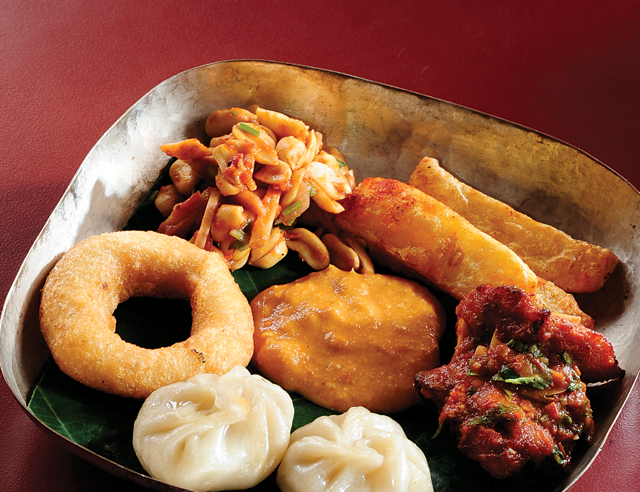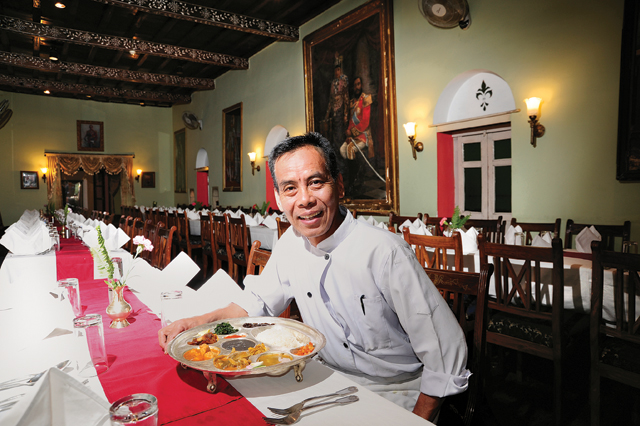Pinning down what exactly constitutes authentic Nepali cuisine proves more difficult than one would assume
In the last decade, we’ve witnessed a boom in Kathmandu’s restaurant scene. City centers have been flooded with international cuisines at the hands of establishments specialising in eats from around the world. Interestingly, there’s also been a look inwards, a resurgence of curiosity in our own culinary roots - in ‘authentic’ Nepali cuisine.

“What sets authentic Nepali food apart is firstly its variety, determined as it is by geography, ethnicity, religion and culture,” says Rajee Dhital, in-charge of The Village Café. “The food that people in the plains eat differs from what we eat in Kathmandu which, again, is different from what’s eaten in the higher regions.” The Village Café, located in Pulchowk, is a part of the SAARC Business Association of Home Based Workers Nepal (SABHA) and was established to bring Women Home Based Workers into the mainstream by tasking them to prepare a range of classic Nepali dishes for patrons.
 Dhital, who has a Bachelor’s in Hospitality, had entered the restaurant business in 2011. “Our plan was to revive traditional Nepali food in the market because most restaurants in Kathmandu usually serve adulterated versions, not the real deal,” she says. “And people come in and say that what we serve tastes very much like home.”
Dhital, who has a Bachelor’s in Hospitality, had entered the restaurant business in 2011. “Our plan was to revive traditional Nepali food in the market because most restaurants in Kathmandu usually serve adulterated versions, not the real deal,” she says. “And people come in and say that what we serve tastes very much like home.”
While on one end of the spectrum we have The Village Café, where the food is simple and cooked by local women from villages around Kathmandu, on the other is the grand Baithak Restaurant at Babar Mahal Revisited, formerly a horse stable of a Rana palace. True to its history, the restaurant serves courtly Rana cuisine coupled with an assortment of traditional Nepali dishes. For Surendra Kapali, Manager of Baithak, the charm of the restaurant lies not just in the food but also in the ambience. “We serve our food on silver plates, which was how the Ranas used to dine,” he says.
So what exactly is the ‘real deal’ when it comes to Nepali cuisine? Is it characterised by the standard Pahari dal-bhat-tarkari and its varied condiments, the famous Newari food, the Tibetan-influenced Himalayan cuisine, the meaty Thakali dishes or the food of the Terai people that mirror Indian dishes? Dhital and Kapali would say yes to all of the above.
“It has a lot to do with how you’re cooking something, rather than what you’re cooking,” Dhital states. “That’s where a lot of our unique flavours come from.” She gives the example of cooking over wood-fire, and how the process helps retain the aroma and flavour of the wood used, making dishes tastier than they would be cooked on conventional gas stoves. And then there are the spices, which Dhital says play a major role. “Nepali food may not use as many spices as Indian cuisine, but they really do matter,” she says. “Especially homemade and fresh spices…that’s why we’ve been making our masalas on the spot at the café.”

Many would attest that food is also enhanced by the way it is eaten. “I don’t know whether it’s scientifically proven but my grandparents used to tell me that the energy emanating from the tips of our fingers help in digestion,” Dhital remarks. “That, and the fact that it makes what you’re eating taste better, is probably why most Nepalis still eat by hand.” Nepali food is also nutritious, she adds, with even the basic dal-bhat-achar combo containing a good dose of carbs, protein and vitamins.
There are, as we can see, quite a few features that render Nepali cuisine unique from its regional contemporaries. But its components are difficult to pin down definitely because like most cuisines, it has been a constantly evolving and diversifying entity, a reflection of the many influences the country has been subject to over time. And that diversity is testified to by The Village Café and Baithak – restaurants that might differ in presentation and ambience, but both of which are striving to preserve Nepal’s culinary traditions in their own ways.










